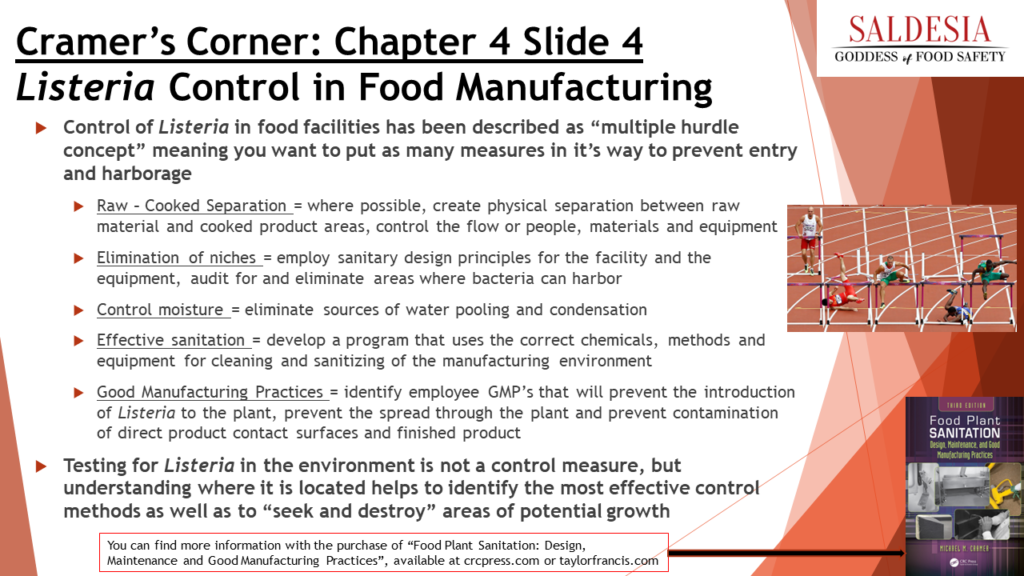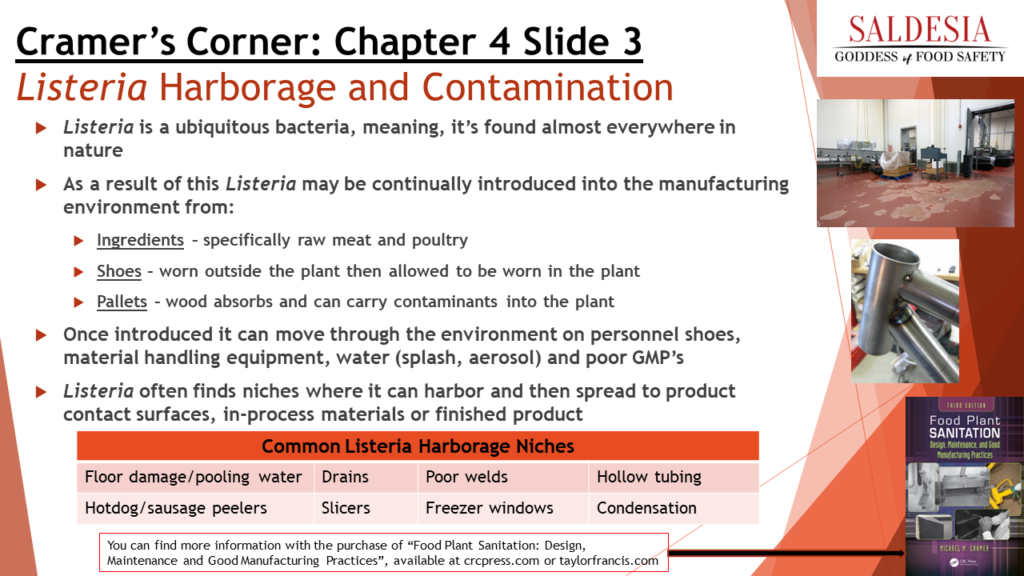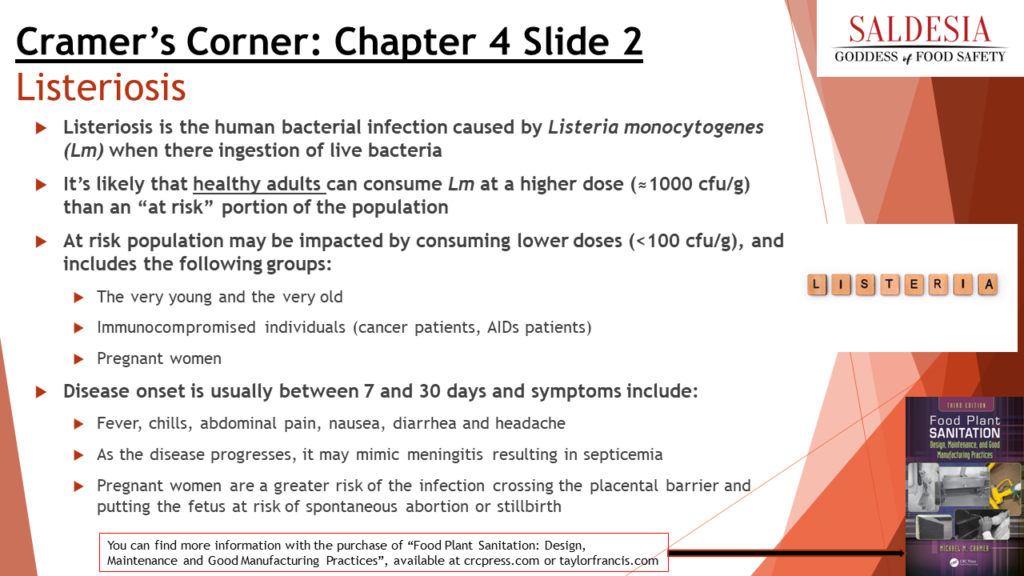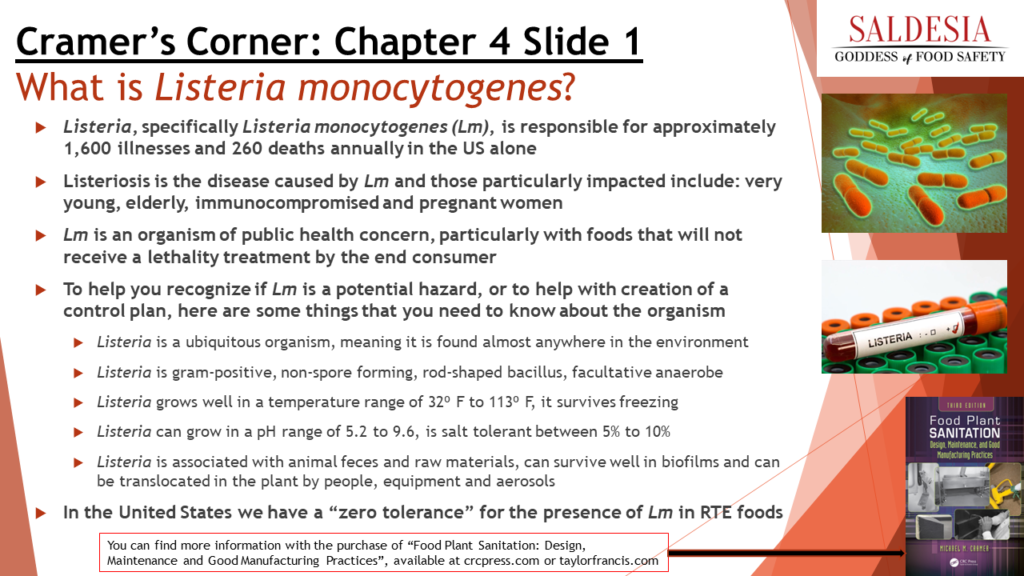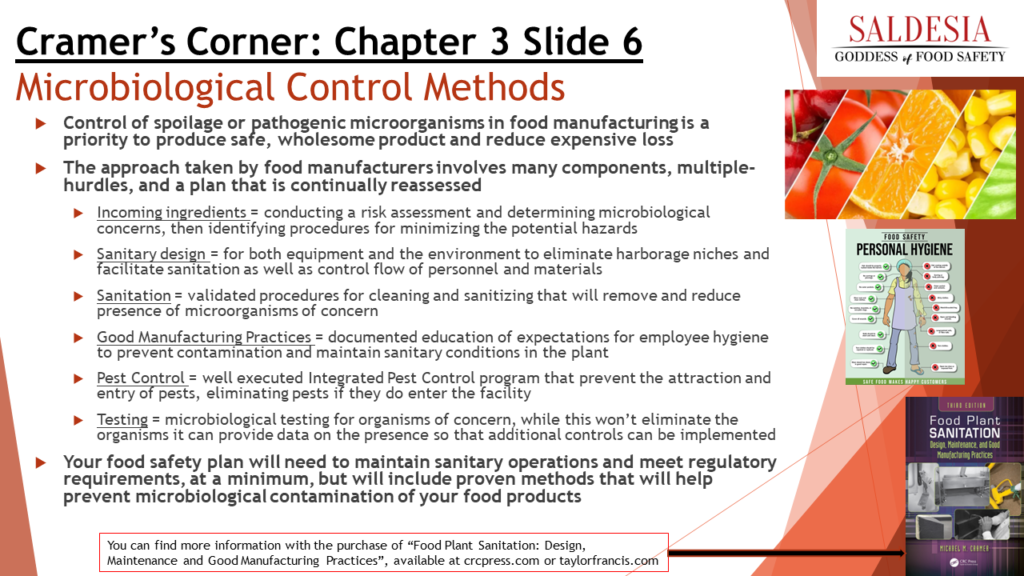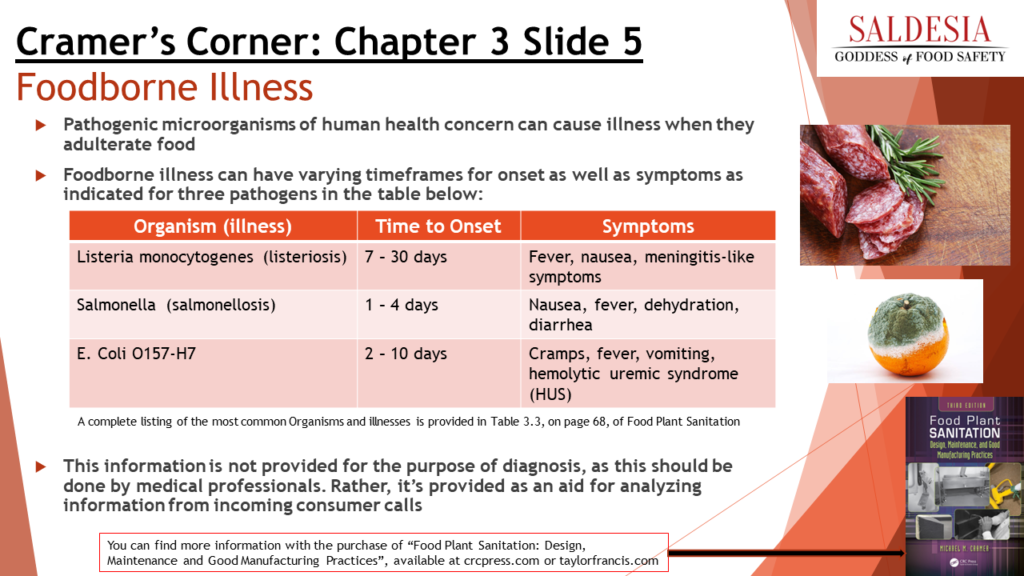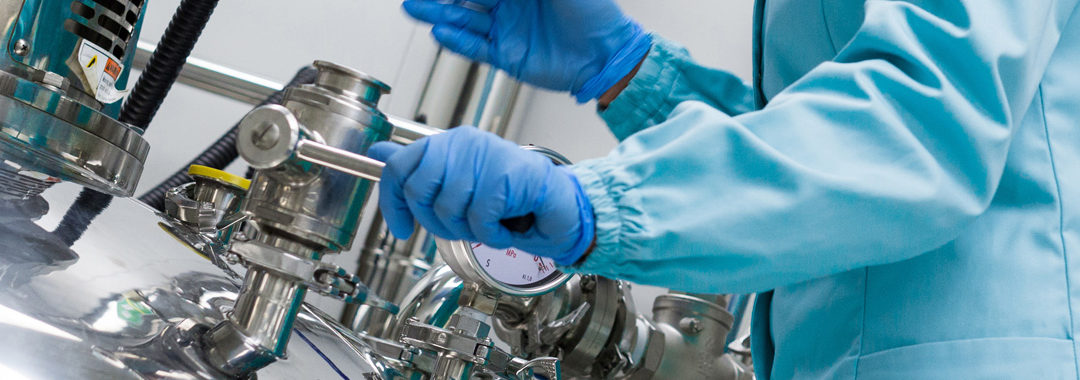Latest News & Resources
November 23rd, 2022 by Jim Miller
Listeria Control in Food Manufacturing Per Michael Cramer, "When I was in school, I ran track in Junior High and in High School. My favorite event was high hurdles and I was not very good, but I ran with abandon. When I got to college, the hurdles were higher and I spent a lot of time picking myself up off the track because I fell quite a few times. This... Read the rest of this entry »
November 23rd, 2022 by Jim Miller
Listeria Harborage and Contamination Per Michael Cramer, "We want to prevent harborage of food pathogens that can contaminate our foods, rather than try to detect them solely with end product testing. Listeria is an organism that can be found almost everywhere in the environment. This means that it can potentially be introduced into the manufacturing facility from ingredients (raw meat and poultry), personnel (shoes, hands) or materials that travel through... Read the rest of this entry »
November 23rd, 2022 by Jim Miller
Listeriosis Per Michael Cramer, "Last week we described the conditions for Listeria monocytogenes (Lm)to thrive in our manufacturing environment. This is the organism that is responsible for the disease listeriosis and is responsible for approximately 1,600 illnesses and 260 deaths in the US annually. While healthy adults may consume foods that are adulterated with Lm, it is the “at risk” population described in Cramer’s Corner Chapter 4 Slide 2 that... Read the rest of this entry »
November 23rd, 2022 by Jim Miller
What is Listeria monocytogenes? Per Michael Cramer, "In Chapter 3, we presented the microorganisms of food manufacturing concern. This included both pathogenic as well as food spoilage organisms. One of the organisms touched upon was Listeria, specifically Listeria monocytogenes, an organism that is responsible for approximately 1,600 illnesses and 260 deaths in the US annually. The ability to control Listeria in the food manufacturing environment begins with understanding the organism... Read the rest of this entry »
November 23rd, 2022 by Jim Miller
Microbiological Control Methods Per Michael Cramer, "One of the primary objectives of food manufacturers is to assure that we are protecting consumers, our customers and the company’s reputation. In order to do that we need to assure that we are identifying and controlling hazards, such as microorganisms of concern. This will include pathogenic organisms, those that cause foodborne illness, and spoilage organisms that can result in reduction of shelf life... Read the rest of this entry »
November 23rd, 2022 by Jim Miller
Foodborne Illness Per Michael Cramer, "Nothing like having a food illness to make you a zealot to prevent others from getting ill. As food manufacturers and food safety personnel we need to be aware of the human consequences of poor facility conditions, GMP non-conformance and ineffective sanitation. Some of the symptoms of foodborne illness are provided in Cramer’s Corner Chapter 3 Slide 5, but more detail is provided in Chapter... Read the rest of this entry »
November 23rd, 2022 by Jim Miller
Beneficial, Spoilage, and Pathogenic Organisms Per Michael Cramer, "As food safety and quality professionals, we often think of microorganisms in negative terms. And those that can spoil food or cause foodborne illness do create their share of challenges for us in the food industry. However, we have to also recognize that there are many different types of organisms in the environment. Some are innocuous, meaning they are not harmful or... Read the rest of this entry »
November 23rd, 2022 by Jim Miller
Bacterial Differentiation Per Michael Cramer, "Bacterial differentiation is a means of identifying various types of bacteria associated with food ingredients and the manufacturing environment. Primary methods for bacterial differentiation include; Bacteria Shape, Gram Staining, Spore Formation and Nutrient Metabolism. Bacterial differentiation is briefly explained in the slide below and in greater detail in Chapter 3 of the book Food Plant Sanitation, entitled “Microorganisms of Food Manufacturing Concern”. This is important... Read the rest of this entry »
